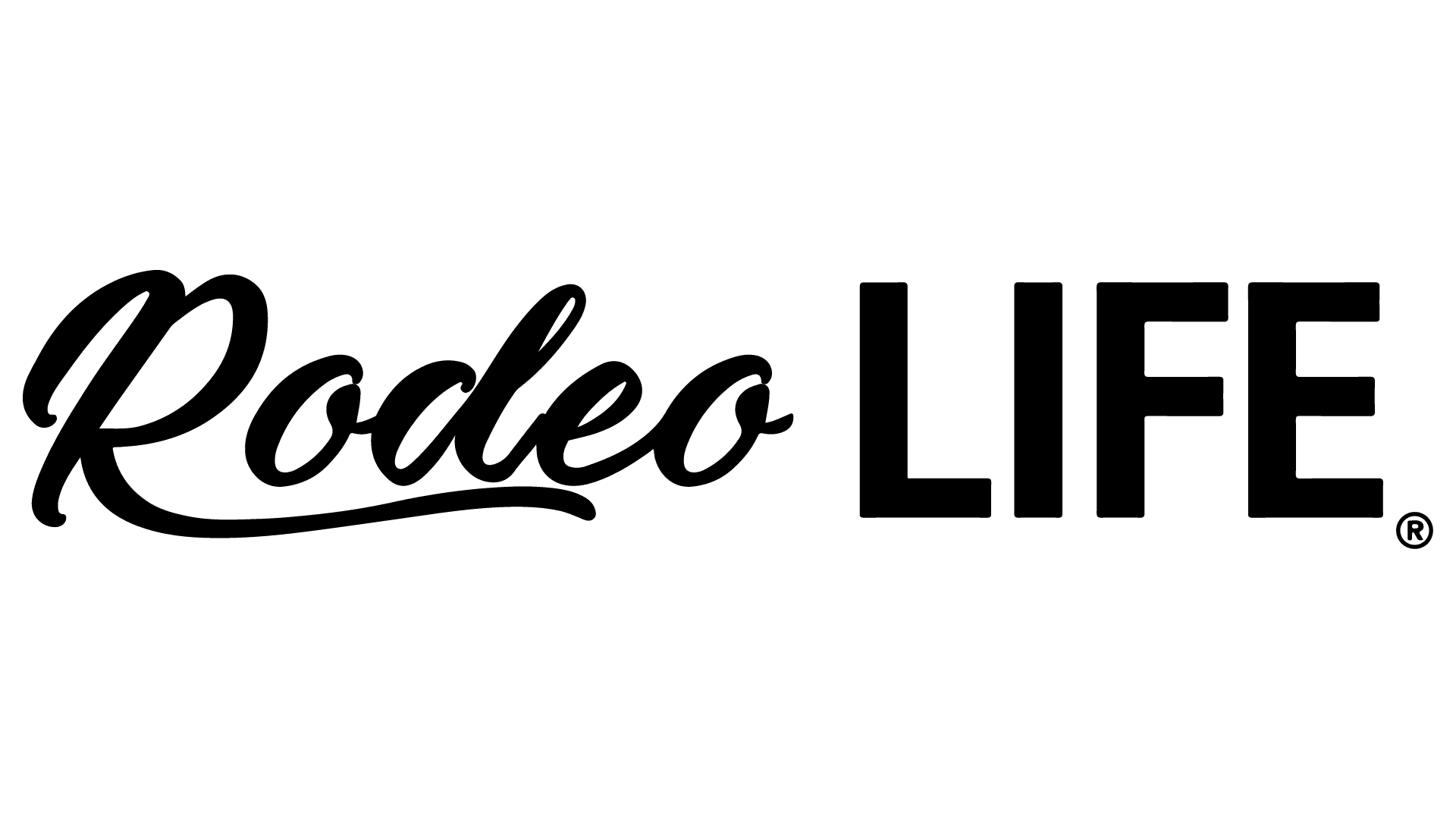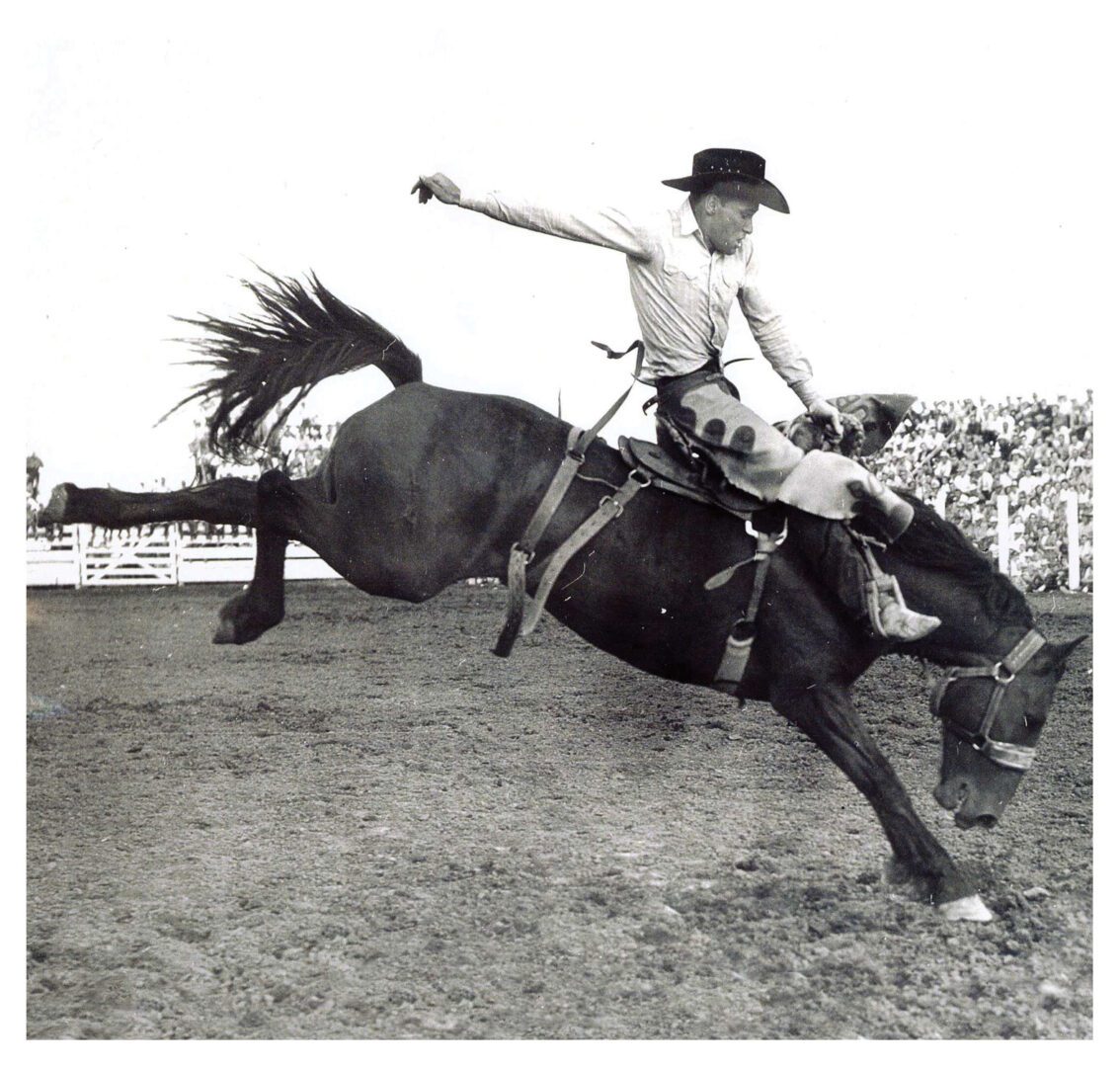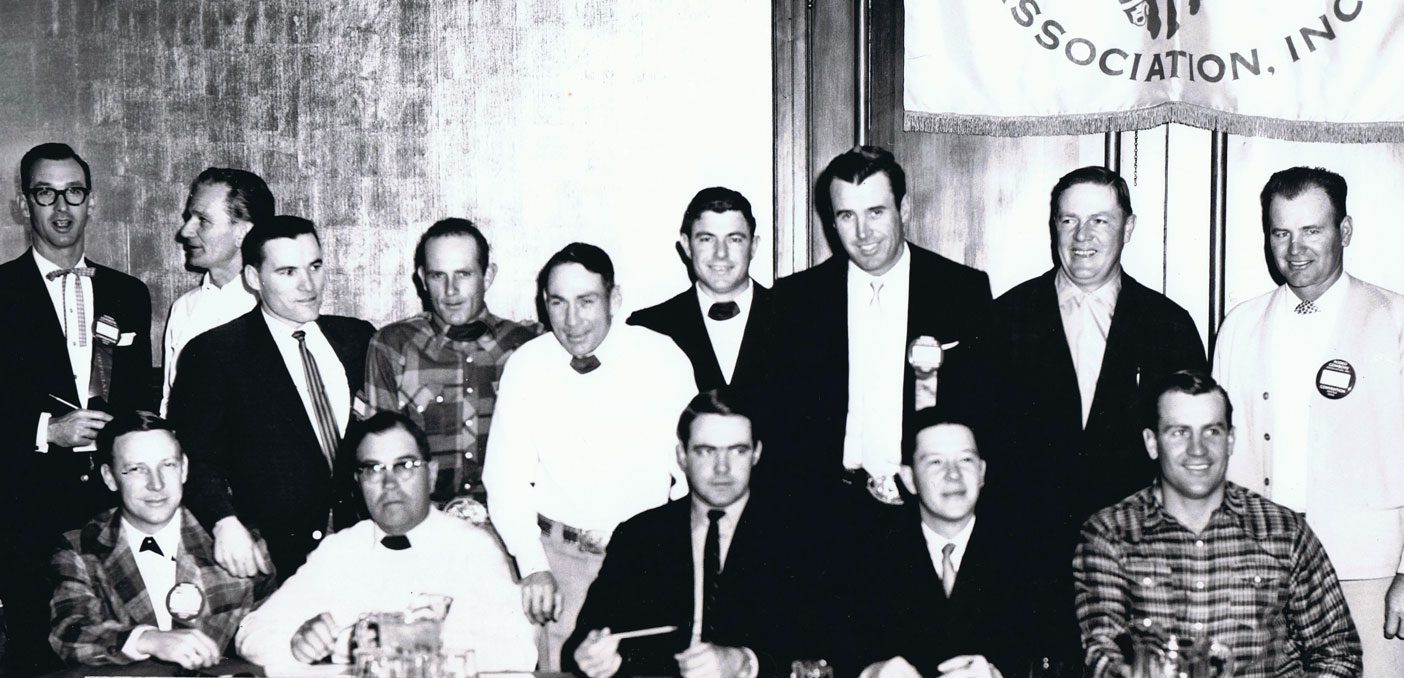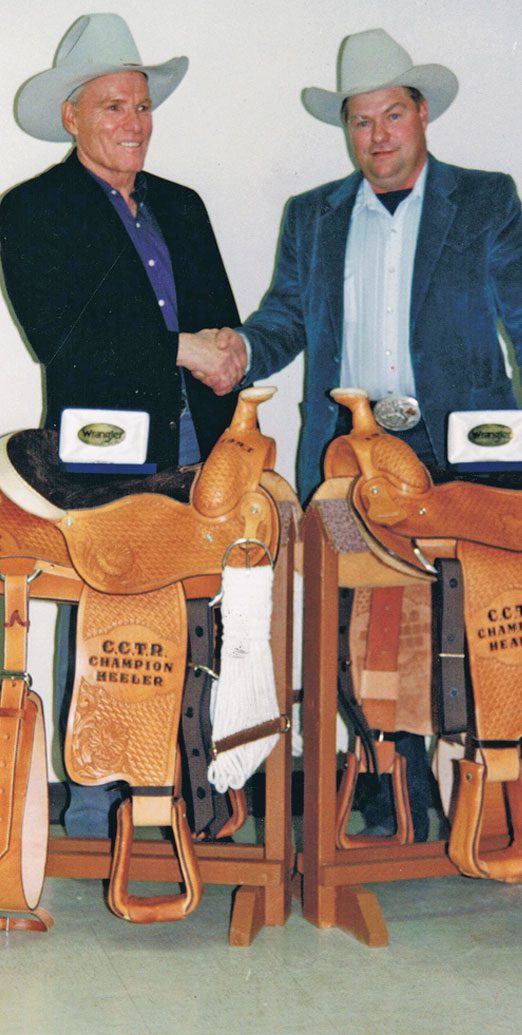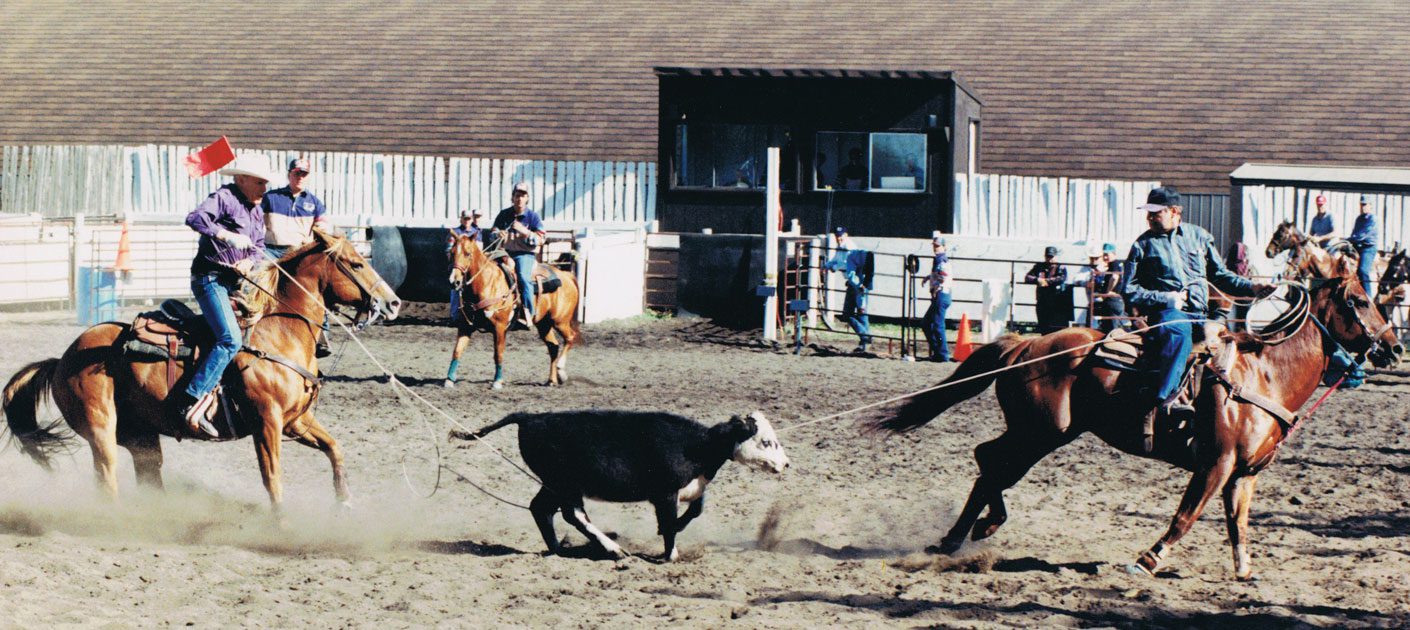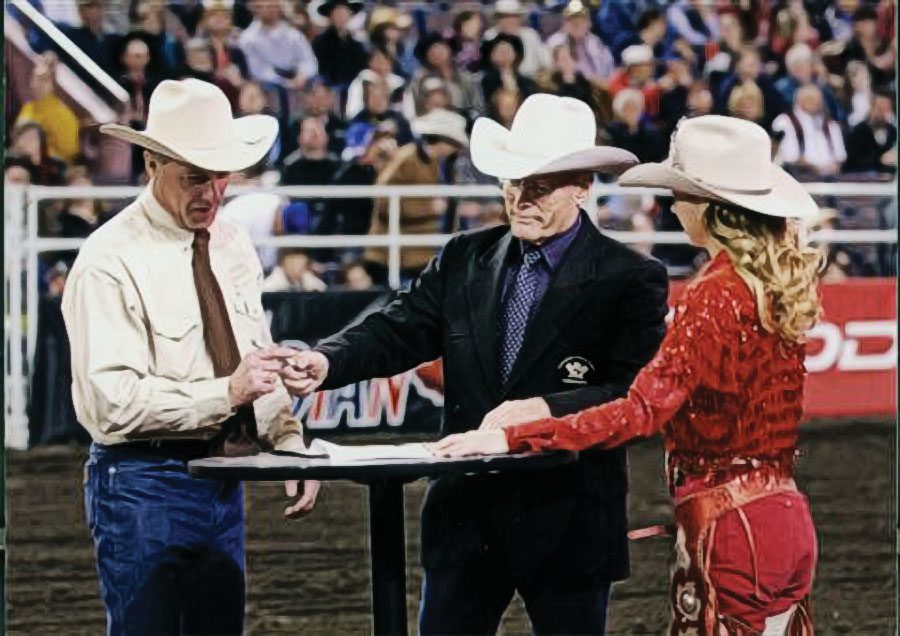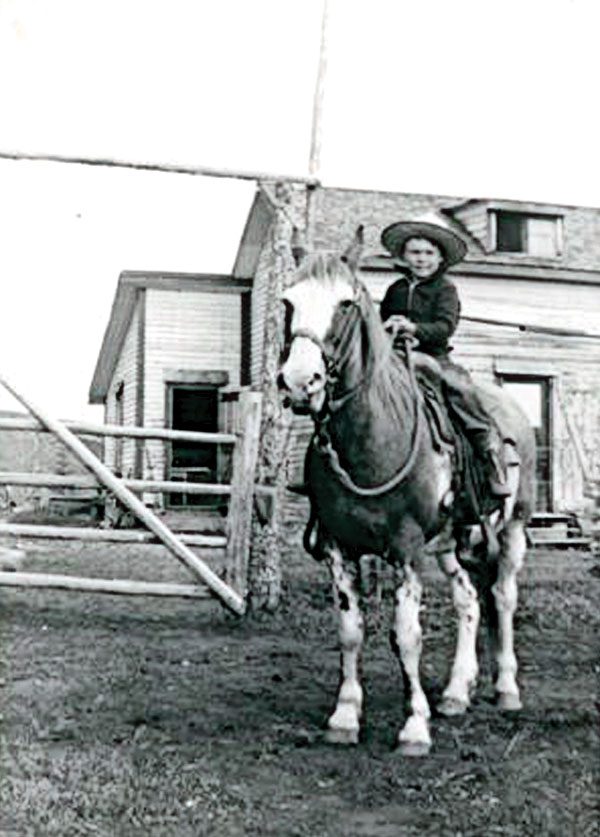R.J. “Bob” Robinson, one of Canada’s premier bull riders, spent his life competing and serving in the sport he loves. He is one of nine being inducted into the Rodeo Hall of Fame during the Rodeo Historical Society’s ceremony September 26-27 at the National Cowboy & Western Heritage Museum in Oklahoma City, Okla. He qualified for the National Finals Rodeo in 1962 and 1964, and held elective positions with the Rodeo Cowboy’s Association and the Canadian Professional Rodeo Association.
Born in Calgary Alberta, Canada in 1931, Bob grew up around rodeos. His father, Sykes Robinson, was a top bronc rider and steer rider in the 1920s through the 1940s. Bob began his rodeo career at the age of eight, riding steers at Rolling Hills, Alberta. “I was too young and too weak,” he said. “They were riding steers and I didn’t have a rope, so they supplied me with a hard little 3/8” rope. I bucked off at the end of the gate and went home. My dad had gone to World War II so my Uncle John would hold calves at home and I would ride them.” He got on again four years later and took fourth. His third try earned him a first place and $35. “I was on my way,” he said. “I didn’t really get into the rodeo business until I got out of high school.”
Bob wanted to be a bronc rider like his dad, and was able to start that in his later teens. He graduated from Saint Mary’s High School in 1950, where he excelled in track, winning the mile run for his school in 1949 and 1950. He considers himself a natural at running and proved it by setting a new record of 4.57 in 1950. Bob remained involved in rodeo after high school, spending winters with Lawrence Bruce, his friend Winston Bruce’s father, in Central Alberta, where he rode bucking horses on the warmer winter days. He spent his summers working for Harry Vold in Dewinton, AB., driving truck and helping produce rodeos. “Bob was very reliable, he was a good hard worker,” said Mr. Vold. “He is a good honest person.”
He also worked for Ted Glazier, a rodeo cowboy who was also a mixed farmer. “He hauled me to all the Alberta rodeos.”
He rodeoed whenever he could, learning how to win from his travelling partners Deb Copenhaver, Bill Linderman, Lyle Smith, Paul Templeton, Jim Shoulders, and Duane Howard. He had his first major win in 1953, winning the All Around title at Edmonton, Alberta, competing in saddle bronc riding, bull riding, and steer decorating. He purchased his RCA card in 1950 and in 1955 he crossed over into the states to compete. In 1956 he won the All Around in Edmonton and the Saddle Bronc Riding at Calgary Stampede and became the 1956 Canadian Saddle Bronc Champion. 1957 was the year that Bob really developed into a world class bull rider. He won Salinas and Boston Gardens. He contributed being more consistent in bull riding to simply riding lots of stock. Jim Shoulders coached Bob, telling him to ride a little bit away from his riding hand. This advice helped him make the whistle more often.
He got married for the first time in 1957 to Connie Ivins, her father was a roper. They had five kids and she stayed home while he was on the road.
He served as the bull riding director for the RCA in 1959 and that same year he was asked by Lex Connally, General Manager of the RCA, to be the Executive Secretary (now called Rodeo Administrator). He held this job until the spring of 1962. His bull riding career took off when his tenure was up and he qualified for his first NFR that year. He managed to get to enough rodeos, even though he had a full time job in California as a project manager. He entered the Finals in 10th place and remained in the position with $8,417 at the end. He won the average at the National Finals, becoming the first Canadian to ever win a major event in professional rodeo history. He considers that as the greatest moment of his career. Jim Shoulders, Ronnie Rossen and Bob Wagner were all competing against Bob.
The next year, he missed the cutoff for the finals by $16. He qualified again in 1964 in the 8th spot and ended the finals ninth. He wanted to be a dentist and returned to college that same year, enrolled in junior college at Porterville, Calif. He continued his love of track, running the mile in 5.20. He also started a rodeo school, charging students $150 a month. Bob decided teeth were not his future, and ended up obtaining a Bachelor of Arts degree in Radio and Television Broadcasting with a minor in Marketing from Fresno State in 1968. “I was announcing rodeos, so I was taking those classes and I just couldn’t do the chemistry and math.” He entered the sales profession equating sales to rodeo “except you have a lot better draw when you call on your accounts. I was a different type of sales person. I took their stock prepared a rate of sale of our product, suggested a fill in on their sales, then I showed them the new items and I almost always got an order.”
The last buckle that Bob won was at Santa Marie, Calif., in the saddle bronc riding in 1969, one year before his last bull ride in Salinas, Calif. At the age of 38 he decided it was time to concentrate on his future. “I had a really good job with Levi Strauss in Canada and they didn’t want me to ride anymore.” He worked there until 1977. In 1978, 36 years ago, he realized he had a real problem with alcohol. “I called a well known 12-step program, with more than 1 million recovered members. By the grace of God, I have stayed sober for 36 years one day at a time.” From 1978 through 1980 he was a sales rep at GWG Ltd, a subsidiary of Levi Strauss on Canada, and switched to Blue Bell Canada Inc. (Wrangler) in 1981, working there until 1988.
From 1988 until 2006, Bob had his own whole sales agency in Alberta. The itch to ride again became too great and Bob entered the bull riding at some Senior Rodeo Association events. He pulled his pelvis apart at a rodeo in 1980 and he traded his bull rope for a lariat and took up team roping. He continued to serve rodeo – President of the Canadian Rodeo Cowboy’s Association from 1973-74. “I led the CRCA board to putting on the first Canadian Finals Rodeo in Edmonton in conjunction with the Edmonton Exhibition led by Len Perry.” He was President of the CPRA in 1980 and 1981; President of the Canadian Senior Pro Rodeo Association for 1995-1997; President of the CPRA from 2004-2005. He was inducted into the Canadian Pro Rodeo Hall of Fame in 1997. He also received the Pioneer of Rodeo award from the Calgary Stampede in 2009.
He and his second wife of 32 years, Peggy, live at Millet Alberta, Canada, and they are currently developing ¼ section of their land into small acreages. Between the two, they have eight children, 23 grandchildren, and ten great grandchildren.
He continues to be an ambassador for rodeo. “Rodeo has been a lot of work, but I did it because I love it. I see lots of things that should be changed – it’s very hard to make a living rodeoing – and unless somebody goes into teams or getting a national league going with television. I’ve been in it for 60 years and it wouldn’t take much to make it work.” He has switched from running to walking after two knee replacements and one hip replacement.
Story also available in October 1, 2014 Issue.
